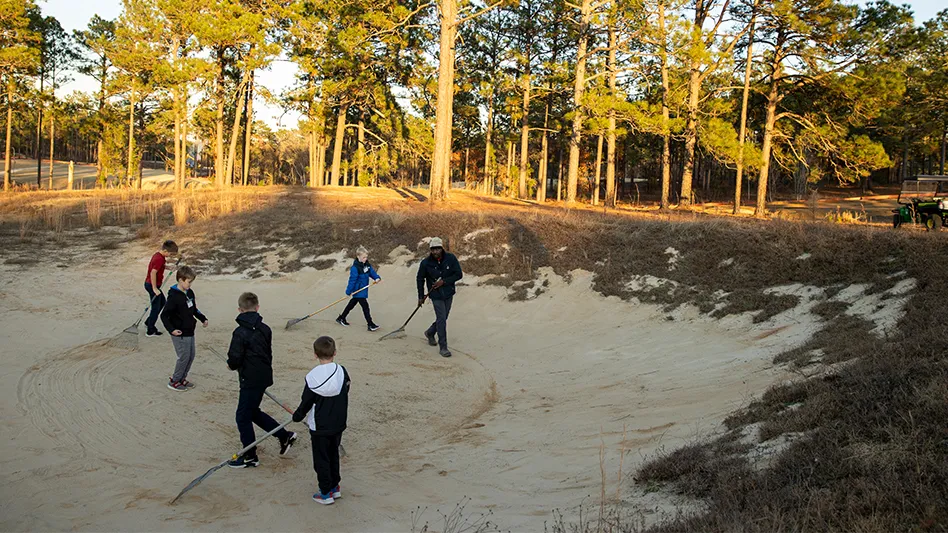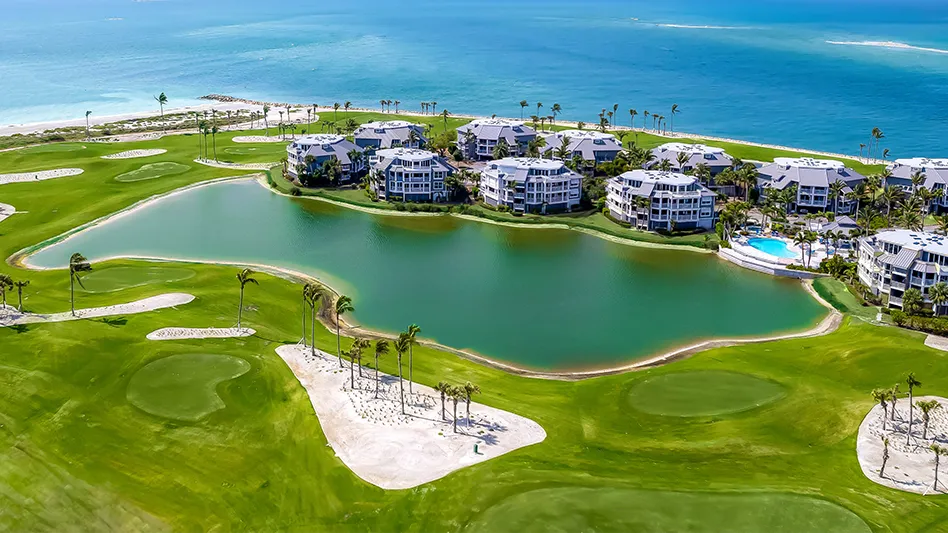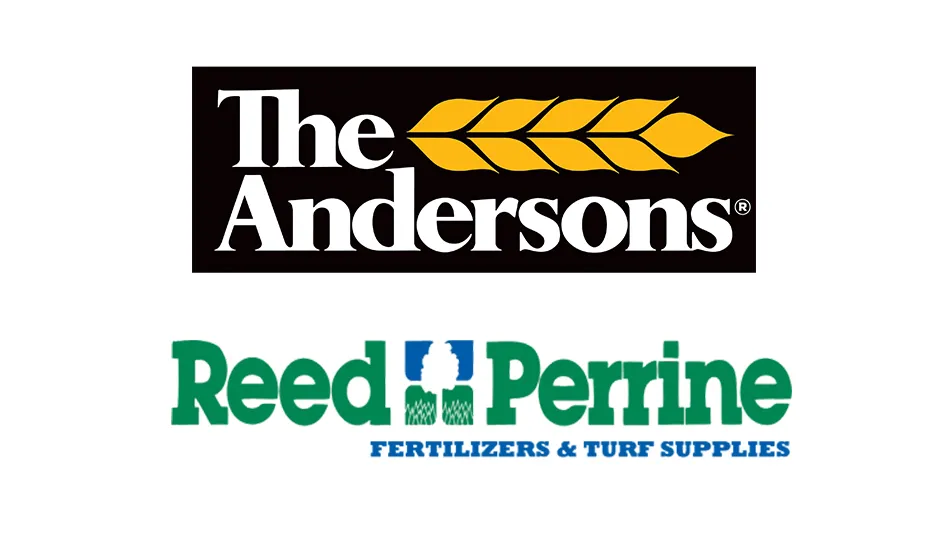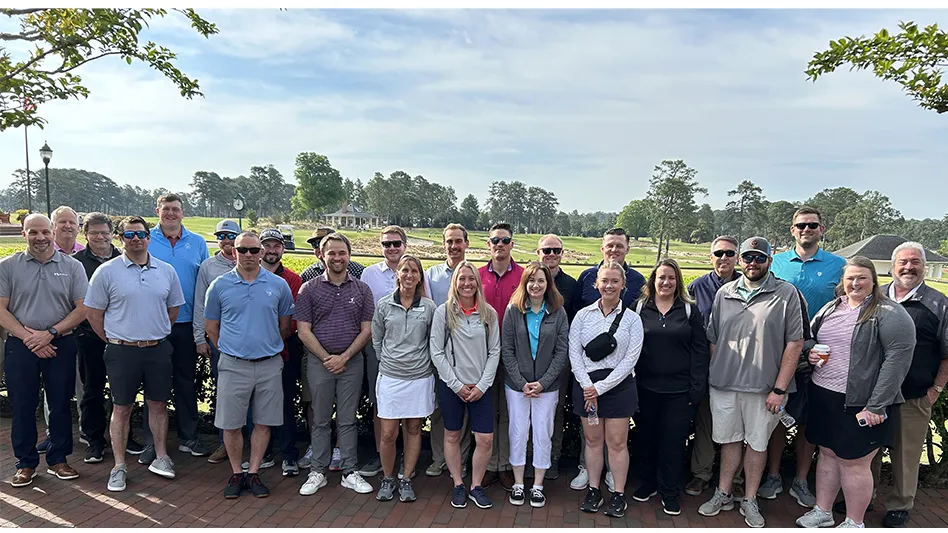Greens collars and edges easily get banged up from turning, loading and unloading machinery, and just everyday operation. Once they’re damaged, it can be difficult to get them back in solid shape. Whether you’re fixing the problem, or just preventing it, here are a few case studies featuring tips and tricks from industry pros to help you make sure your greens look as perfect as possible.
 No room for error
No room for error
Muirfield Village Golf Club
Dublin, Ohio
Paul B. Latshaw – director of grounds operations
18-hole, regulation-length course
Private Non-Equity golf course
72 par – 7,221 yards – 145 slope
By design, the bunkers at Muirfield Village Golf Club in Dublin, Ohio are very close to the putting surfaces. This is done for both strategy and difficulty. Because of this, there is not a lot of room to maneuver a push mower and make turns, thus causing significant damage to the greens. When Superintendent Paul Latshaw arrived at Muirfield, the collars were in pretty bad shape.
“The program started from day one,” he says. The first thing they tried was carpets for the mowers to turn on. The next thing they tried was using a very thin sheet of luan plywood, but it deteriorated quickly when wet, making it not ideal. Now they use a mat similar to the mats now produced by Precision. The mats are 1/8 of an inch and can be stored on racks they built onto their mowers. This allows for easy transportation and saves the time it would take to load and unload the mats every day. The mats help reduce the amount of abrasion that happens on the surfaces when the large machinery is turned and, as of now, it seems to be working.
“The program’s working,” Latshaw says, although it does add extra time to the maintenance crew’s daily routine. “It probably adds 45 minutes to the greens routes,” he adds. However, the time it saves by preventing the damage makes up for it. “If we didn’t use the [mats], our collars would be dead.”
Along with the mats, Muirfield’s staff also hand rolls their greens so they’re able to stop just short of the collars and avoid more mechanical damage.
“During a tournament you might be triple cutting in the morning and turning on the collar even with mats down, but then with mowing two times at night and rolling, collars get beat to death,” Latshaw says.
A third technique Muirfield uses to prevent greens damage is to overseed with a little perennial ryegrass
“It doesn’t look as great but it’s able to withstand the mechanical stresses more,” Latshaw says.
 Sandy Solution
Sandy Solution
Cedar Ridge Country Club
Broken Arrow, Okla.
Mike Wooten, superintendent
18-hole, regulation-length course
Private equity golf course
71 par – 7,290 yards – 138 slope
In the heat of the Oklahoma summer, Cedar Ridge Country Club, located in the city of Broken Arrow, sees wear and tear from the mowers on the edges of the greens. Because the course greens are bentgrass with Bermuda grass collars, the collars don’t see as much damage as other courses might see, but the edges still cause a problem. To deal with this, the club uses a 3-foot drop fertilizer spreader and fills it with sand. After putting down a heavy cover of sand on the edges of the greens, they broom it weekly to keep the edges and the paths around the area looking tidy. They also try to keep the mowers from bumping the sand when they mow around the edges to avoid any further damage.
The idea of using the sand came from seeing the damage to the greens from mowing. When they would mow, it would destroy the edges, and they knew they had to firm them up to prevent that from continuously happening. The sand was a good way to do so.
Before deciding on the sand, Cedar Ridge tried to move the cleanup grass one width of a walking greens mower, and then mow at a different height to have a little bentgrass collar. It worked reasonably well, but Mike Wooten, the superintendent at Cedar Ridge, believes the sand works better. And while he knows there are probably better ways to prevent damage than laying down the sand, those ways would be too disruptive to play during the summer months when the course is the busiest.
“Aerification and filling holes with sand would be exceptional, but too disruptive on bentgrass,” he says.
Another thing they do to prevent damage is use a dull sidewalk edger to edge the interface between the Bermudagrass green and bentgrass collar. The reason for the dull blade is that it does a cleaner job and doesn’t destroy the Bermudagrass like a sharpened blade would.
“We had used a sharp [edger] before,” Wooten says. “It was a little bit of tearing and we just went with it. We found that the dull one doesn’t do the tearing. It just cuts the Bermuda runners off.”
 Close to perfect
Close to perfect
Four Stream Golf Club
Beallsville, Maryland
Tom Harshberger – Superintendent
18-hole, regulation-length course
Private non-equity golf course
71 par – 7,100 yards – 138 slope
Collar damage at Maryland’s Four Stream Golf Club wasn’t a prominent problem until 2009, when the staff used a turbine blower to blow excess topdressing sand onto the collars after aeration. The problem occurred when a heavy rain worked the sand into the canopy and it couldn’t be removed. When it hit early June and the temperature started rising, the damage appeared.
“[The] damage started showing up once it got hot in early June,” says Tom Harshberger, Four Stream’s superintendent.
Because the collars had such large, thinned out areas, they decided to overseed with P. Ryegrass and bentgrass, as well as spray extra plant growth supplements such as Gibberellic acid. This solved the problem until they decided they wanted to remove the P. Ryegrass. Four Stream decided to deal with the problem until fall of 2011 and spring of 2012. The club sodded the worst areas and then selectively killed the ryegrass with Corsair.
Since then, the collars have improved. To keep them high quality, the club now makes the crew turn the mowers on plastic mats from mid-May through early September.
“The collar region around a green is the area that receives the most traffic on any golf course,” says Harshberger. “Also this is one part of the golf course where, if it’s not close to perfect, it can affect playability.”
Harshberger links the damage of the club’s collars directly to the use of the turbine blowers, and he says there are probably other superintendents out there doing the same thing. Then, when they notice the damage, they are misdiagnosing it.
“I think other courses have run into collar damage that has been self made but blame it on other factors,” he says. “And this may only be a problem in areas that experience intense summer heat and stress. If it’s not hot, the sand should not create much of a problem. But when it gets hot the sand is very abrasive on the leaf blades and helps create more unwanted stress on the plants.”
What Four Stream found to work best with preventing collar damage was mowing higher. Ever since they have increased the height of the mowers when going around the collars, they have looked great. They also keep any triplexes away from the greens so they have their collar/approach mower mow six passes around each green. This keeps the larger mowers away from the collars.
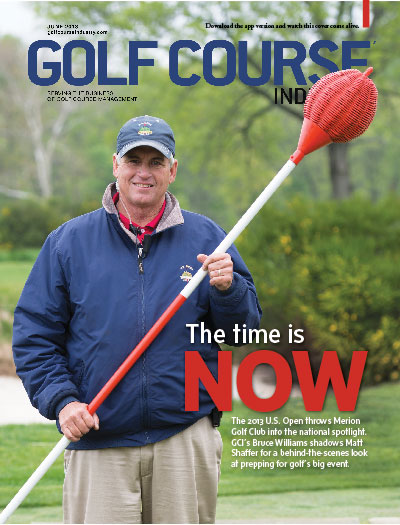
Explore the June 2013 Issue
Check out more from this issue and find you next story to read.
Latest from Golf Course Industry
- USGA opens Golf House Pinehurst
- Bernhard Academy expands leadership team
- Another record year for research
- The Highlands pays more homage to Ross
- Audubon International adds veteran superintendent to leadership team
- South Florida simmer
- Devising safer landings
- SiteOne adds Durentis to product offerings

